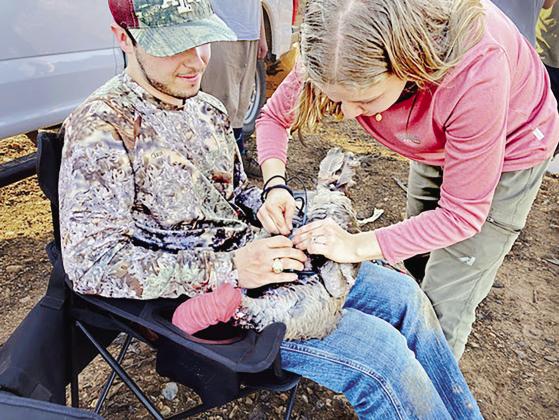WILD TURKEY POPULATION DYNAMICS AND BROOD SURVIVAL PROJECT REPORT FOR JANUARY
Wild turkey genetics, nesting success, and brood survival are among the focus areas in a planned 4.5-year study launched at the beginning of 2022 by the Oklahoma Department of Wildlife Conservation, the Oklahoma Cooperative Fish and Wildlife Research Unit, other state and federal entities, and private landowners working together to address wild turkey population dynamics. Following is a summary of recent study activities.
Genetics Study: To ensure the best possible look at overall genetics, researchers assessed initial wild turkey tissue samples to choose which of them to send for low coverage whole genome sequencing. Researchers were to begin processing samples in accordance with lab requirements to prepare the initial batch of samples to go to the laboratory.
Southwestern Study Area: Sixty GPS transmitters and related telemetry equipment arrived in early January. Graduate student Cody Griffin worked with students from the University of Missouri to program the new transmitters. He scouted potential trap sites and secured access to private lands as necessary. He also commenced baiting and, after seeing consistent turkey activity (see photo), he began gradually building turkey walk-in traps at baiting sites. Five traps had been completed, and one site baited for a drop net, in the area surrounding Sandy Sanders WMA. Trapping of birds was expected to begin in February.
Southeastern Study Area: Graduate student Nicolle De Filippo continued scouting for trapping locations and began baiting potential trap sites. She continued searching for and monitoring hens that were radio-tagged in spring 2022. Eight hens were found alive in January, while five transmitters had not been accounted for. The search for those transmitters will continue during the coming months to ascertain the fate of those turkeys. Trapping of more birds was expected to begin in February.
Financial support for this was provided by the Oklahoma Department of Wildlife Conservation through the Wildlife Restoration Program, and Oklahoma State University.)

